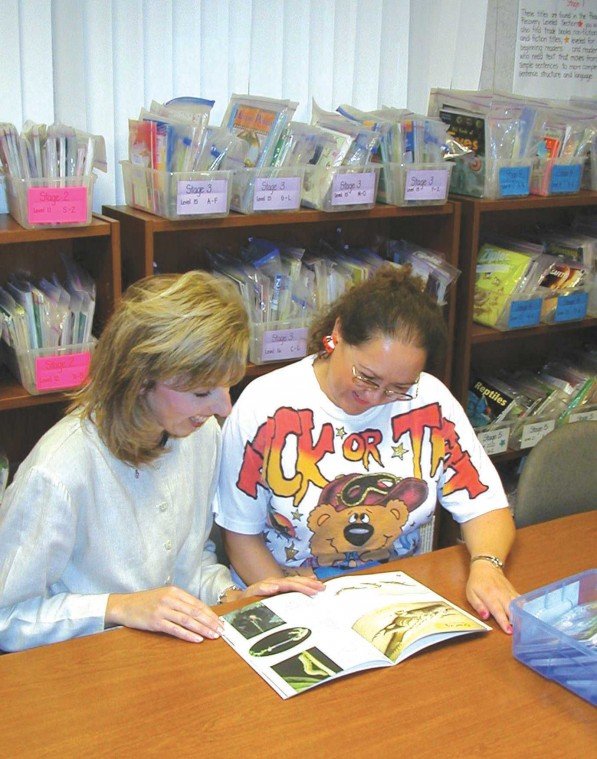GILROY
– Gilroy’s mixed bag of results on standardized tests is
cementing district officials’ beliefs that building more curriculum
consistency in the Gilroy Unified School District is key to
improving student performance here.
Across the district, the latest Academic Performance Index
scores released Thursday show some Gilroy schools taking negative
dips in student performance on standardized tests while others are
posting significant jumps, such as the district record 60-point
improvement by Antonio Del Buono Elementary School.
GILROY – Gilroy’s mixed bag of results on standardized tests is cementing district officials’ beliefs that building more curriculum consistency in the Gilroy Unified School District is key to improving student performance here.
Across the district, the latest Academic Performance Index scores released Thursday show some Gilroy schools taking negative dips in student performance on standardized tests while others are posting significant jumps, such as the district record 60-point improvement by Antonio Del Buono Elementary School.
“We’re really looking to build consistency in the district,” said Superintendent Edwin Diaz. “The history of magnet schools led to sites identifying their own programs and practices.”
Starting this year, the district is using geographic boundaries to determine where new students attend school. And given the emphasis by the state in recent years to show improvement on standardized tests, the district is in the midst of employing a so-called standards-based curriculum that detects students’ strengths and weaknesses via standardized test scores.
“We’re consolidating curriculum, and I think these scores show a need for more of that,” said School Board President Jim Rogers. “If a consolidation effort wasn’t put together somewhere in the district, there will be a coordinated effort now.”
At Del Buono, the site which garnered the 60-point performance leap, Principal Pat Midtgaard credits three things for the school’s success: implementing so-called “best practices” teaching strategies; having experienced teachers dedicated to constant professional development; and “an absolutely excellent” literary resource teacher.
“We really have a driven and focused superintendent, too. You put all that together and you’re going to see improvement,” Midtgaard said. “We were so excited with our scores. Everyone was happy when we got the news.”
The best practices teaching strategies are well-researched techniques for identifying student weaknesses and improving student learning, explained Midtgaard.
“These aren’t strategies we just made up. Educators did research on them,” said Midtgaard.
For students having problems reading fluently, research shows that reading poetry and re-reading stories improves the rate at which a child reads. In the past, Midtgaard explained, teachers may not have exposed students to the same material more than once.
For English language learners, Midtgaard said research shows they need more time to process questions. In the past, teachers may have asked a question and called on the first child to raise their hand. Now, students are put into groups where each child can answer a question within a discussion.
As for the literary resource teacher, Gondie Chavez, Midtgaard credits her with consistently providing teachers with the level-appropriate learning materials teachers need to implement the best practices teaching strategies. A teachers’ resource library at Del Buono has a variety of books grouped by reading level. Chavez uses information garnered from API scores to outline for teachers which books will work best for students at particular reading levels.
In the tightly organized resource library, also known as level-book libraries, Chavez scans through a chart on the wall, “See, if a student is scoring 300 in reading, here are the materials we have that teachers can use to help them improve.”
“She has an extremely hard work ethic and when you combine that with her experience teaching first grade for a couple of years, you have a good thing,” Midtgaard said of Chavez.
But Midtgaard stresses that the final cog in the wheel is the dedication of her teaching staff to student improvement.
“You can give them the research and the training, and you can make sure they have the resources, but the teachers are the ones who have to make it work in the classroom,” observed Midtgaard.
That rings true for second-grade teacher Karen Chavez, who shares no blood relation to the literary resource teacher of the same last name.
“When we got trained on the best practices strategies, people here really took it to heart,” said Chavez. “There’s a belief here that all children can improve. It’s a team effort and we’re teaching to the whole child.”
In the case of the district’s two existing middle schools, South Valley and Brownell, Diaz says a shift toward diagnosing the strengths and weaknesses of individual students seems to have made a significant impact on scores.
Although Brownell still has a slightly higher API score than its counterpart, South Valley improved its performance by 21 points this year, while Brownell dropped one point, falling 13 points over the last two years.
“South Valley has completely modified its student academic program,” Diaz said. “Brownell is now moving in that direction this year.”
Given Brownell’s two-year slide, the school could face intervention by the California Department of Education. The district expects to hear announcement from the state in about a month.
The API is the cornerstone of the statewide accountability system for public schools. API scores are based on performances across several standardized tests, some of which cover a wide variety of academic subjects from math and English to history and science. API scores range from 200 to 1000 points. The interim performance goal set by the state is 800.
Only one GUSD school, Luigi Aprea Elementary, has ever surpassed that benchmark.
Of the nine GUSD schools that improved their API scores in 2002, some made substantial gains while others merely inched forward. For instance, Rucker Elementary, El Roble and Las Animas logged 25- to 33-point jumps from 2001 to 2002.
Elsewhere in the district, Rod Kelley, Glen View and Eliot elementary schools showed 2001 to 2002 differences from +5 to -7 points.














